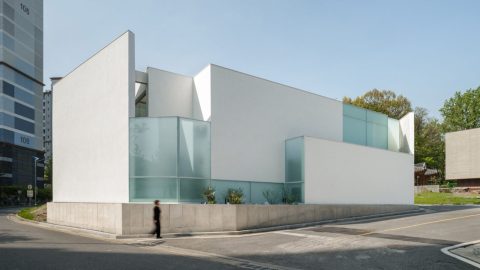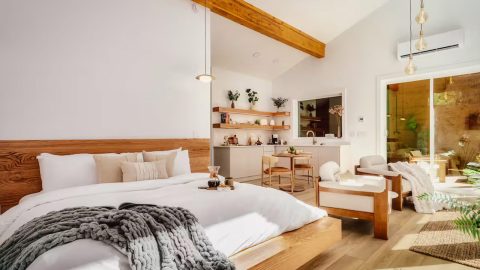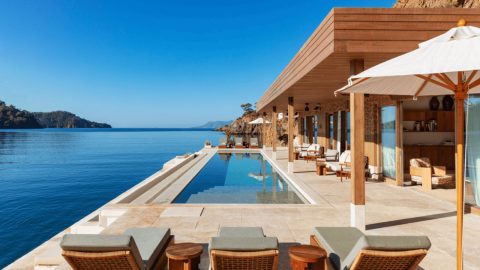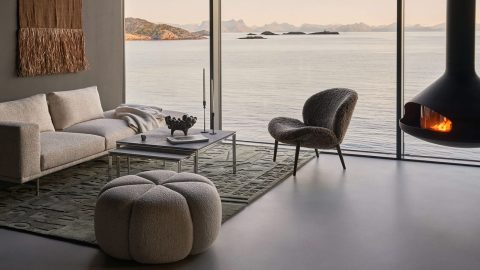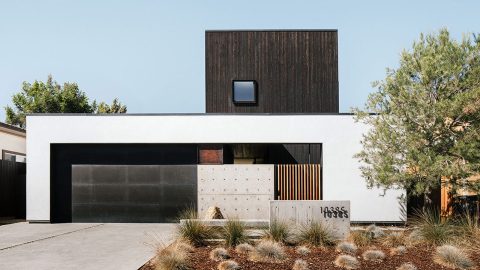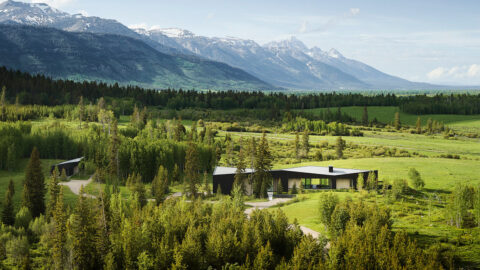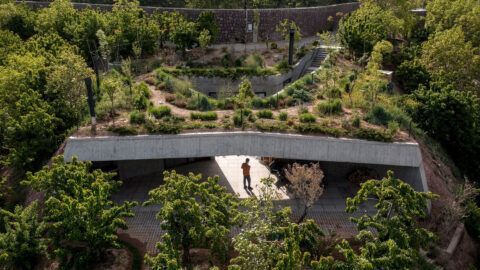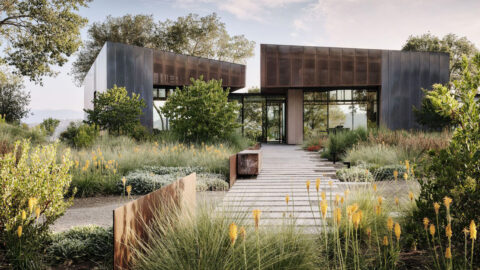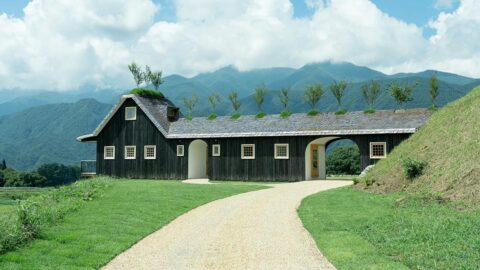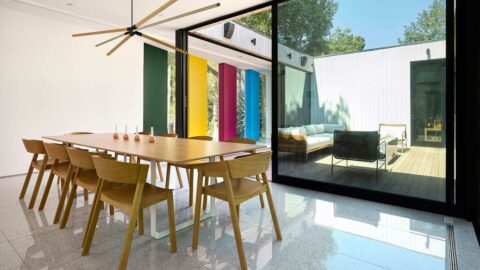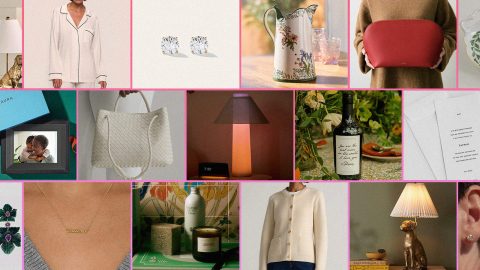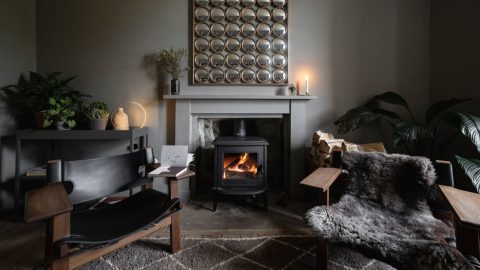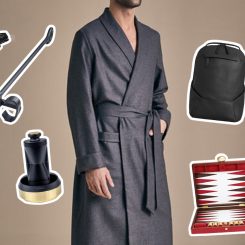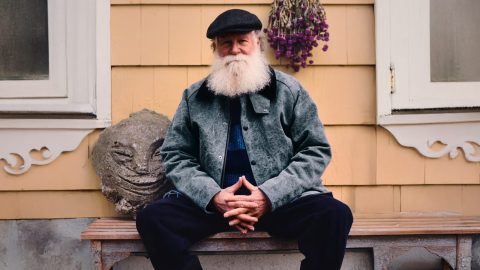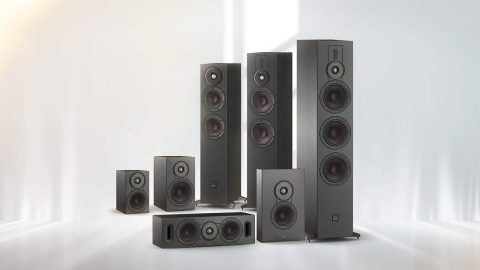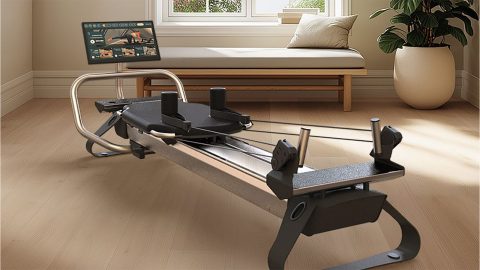Glass Cabin, designed by Mjölk architekti, is a daring renovation project located just outside the small town of Polubný, in the heart of the Czech Republic’s Jizera Mountains. The Czech architecture practice, headed up by Jan Mach and Jan Vondrák, reconfigured a 130-year-old cottage by combining existing materials and techniques with radical new ideas like glass floors, brass-clad ceilings, and vast frameless windows.
Keeping what they could of the existing structure, including some of the original timber and granite blocks, the architects added a new shingle roof and Nordic larch cladding. The large frameless windows came into play due to the desire to bring the surrounding wooded landscape into the home.
Upon entering Glass Cabin, visitors encounter steel stairs that sit in stark contrast to the old beams and an original preserved thatched roof, all illuminated by a round orb-like skylight—offering a glimpse of what the house looked like before. There are now glass floors where the wooden planks of the original flooring could not be salvaged. Glazed elements found throughout the house link these spaces seamlessly to one another. The kitchen and family room space is primarily a two-story glass mass with a reflective brass ceiling.
The kitchen is spread across two levels, with a dining area set in the wood-clad heart of the original structure. The original beams and wall boards throughout the house have been left exposed, as a nod to traditional vernacular architecture. The kitchen and furniture are by the Czech company Sollus, while the architects designed many of the individual light fittings, all of which were then made of brass by the Dekorax metal-printing workshop.
The second floor is dedicated to the family’s bedrooms, where a glass-walled master bedroom has a view directly into the orbed skylight. In the children’s bedroom, there is also a playroom, in the event of inclement weather. For the other two bedrooms, the architects reimagined the classic rooms of a mountain cabin. Glass Cabin retains the essence of both its history and its future. As the architects aptly express, “We kept what we could. What remains, we’ve complemented with a new quality that doesn’t seek to compete with the past.”
For more interesting architecture, see Little House by Felipe Valdivia.












